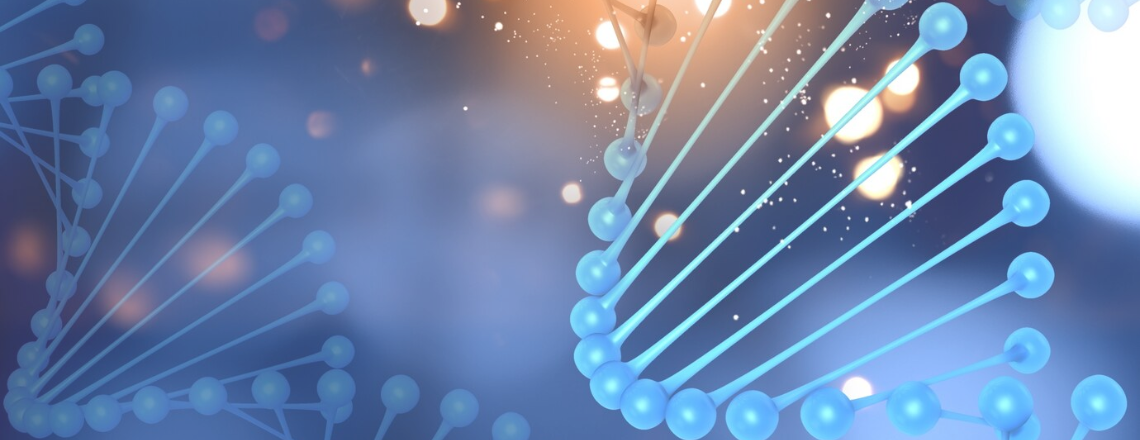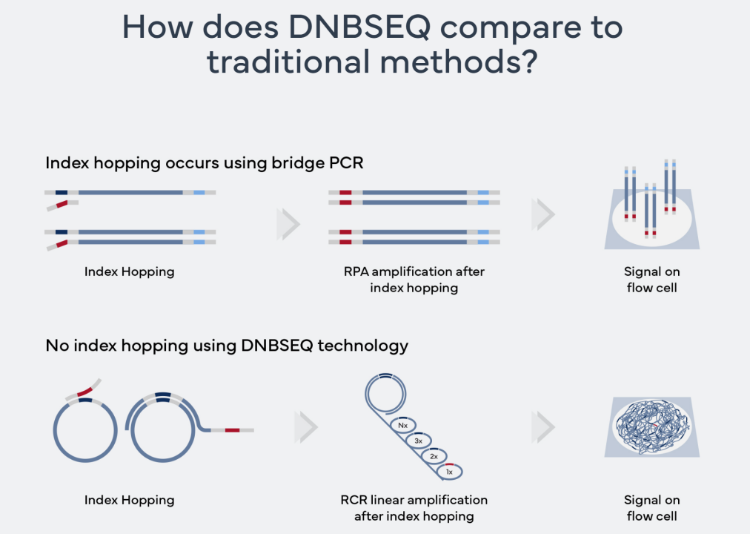Next Generation Sequencing (NGS)
Published Jan. 22, 2024
By Hopkins Medtech
What is NGS?
Next-generation sequencing (NGS) refers to a high-throughput, massively parallel sequencing technology used to analyze DNA or RNA samples. It’s a powerful and efficient method that allows for the rapid and simultaneous sequencing of millions of DNA fragments or RNA molecules. NGS has revolutionized the biological sciences, allowing labs to perform a wide variety of applications and study biological systems at a level never before possible.
DNBSEQ, a revolutionized NGS method
DNBSEQ redefines next-generation sequencing (NGS) capabilities and opens advanced applications to further research.
How does DNBSEQ work?
The core technology of DNBSEQ is built around DNA nanoballs (DNBs). Created during library prep, compact DNBs are loaded onto flow cells and the sequence is read with four fluorescent probes recognizing four DNA bases. DNBSEQ then uses lasers to excite the probes, while taking millions of images to identify bases. These sharp and bright images are then fed into our proprietary image analysis algorithms to precisely sequence each sample.
Library Preparation
During sequencing library prep, the single-stranded circular DNA (sscirDNA) molecules are created. Typical double-stranded DNA fragments, with adapter sequences at the terminal ends, are heated to generate ssDNA. A splint oligonucleotide is hybridized to both ssDNA ends to form nicked circles, and a DNA ligase repairs the nick to create complete single-stranded circles.
With the single-stranded circle as a template, DNBSEQ uses rolling circle replication (RCR) to create billions of DNA nanoballs (DNBs) in a single tube. Each copy is made from the original DNA circle, eliminating clonal amplification errors, and reducing the GC biases and dropouts, often produced by PCR. Under proprietary conditions, the concatemer with about 300-500 template copies is folded into a tiny DNA nanoball ~200nm in diameter.
Sequencing
The DNBs are loaded onto flow cells, which are etched with a pattern of uniformly-spaced ~200nm binding sites at submicron distances. Each site bind single DNB, ensuring high yield of accurate reads with sharp and bright signal and no interference from neighboring nanoballs.
The flow cell loading requires no expensive DNA quantification instruments or reagents. There is no under- or over-loading in a wide range of DNB concentrations. Proprietary loading buffers ensure DNBs stick to the same spots for hundreds of cycles maintaining strong signals. These refinements enable exceptional sequencing accuracy with minimal reagent consumption.
From there, combinatorial probe-anchor synthesis (cPAS) chemistry hybridizes sequencing primers to the DNBs, and fluorescently labeled reversibly terminated probes are incorporated by a proprietary DNA polymerase in consecutive sequencing cycles. The fluorescent probes are then excited by laser light and the DNB array is imaged using advanced cameras.
After completing the first strand, the second, complementary strand attached to the original DNB is synthesized by controlled MDA and sequenced. This generates a stronger second strand signal with high sequencing accuracy.
Analysis
Base calls are determined, and a quality score is calculated from four signal intensities. Our sub-pixel array registration algorithms extract precise fluorescent intensities per each DNB. GPU-accelerated and optimized algorithms and real-time image analysis dramatically increase data processing speed and base-calling accuracy.

